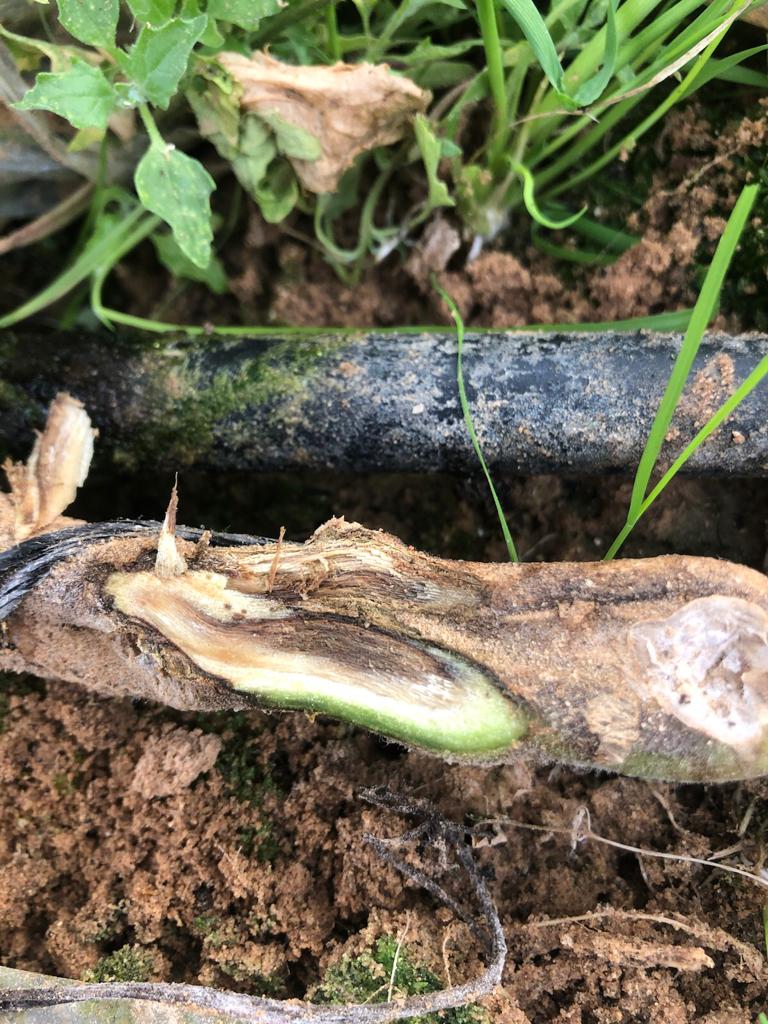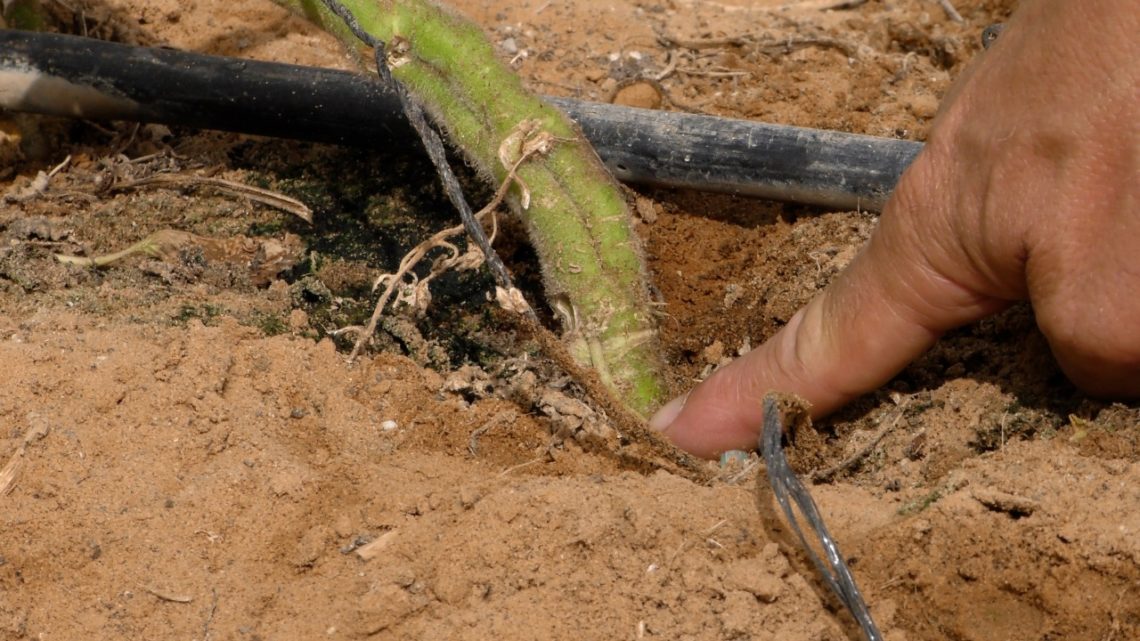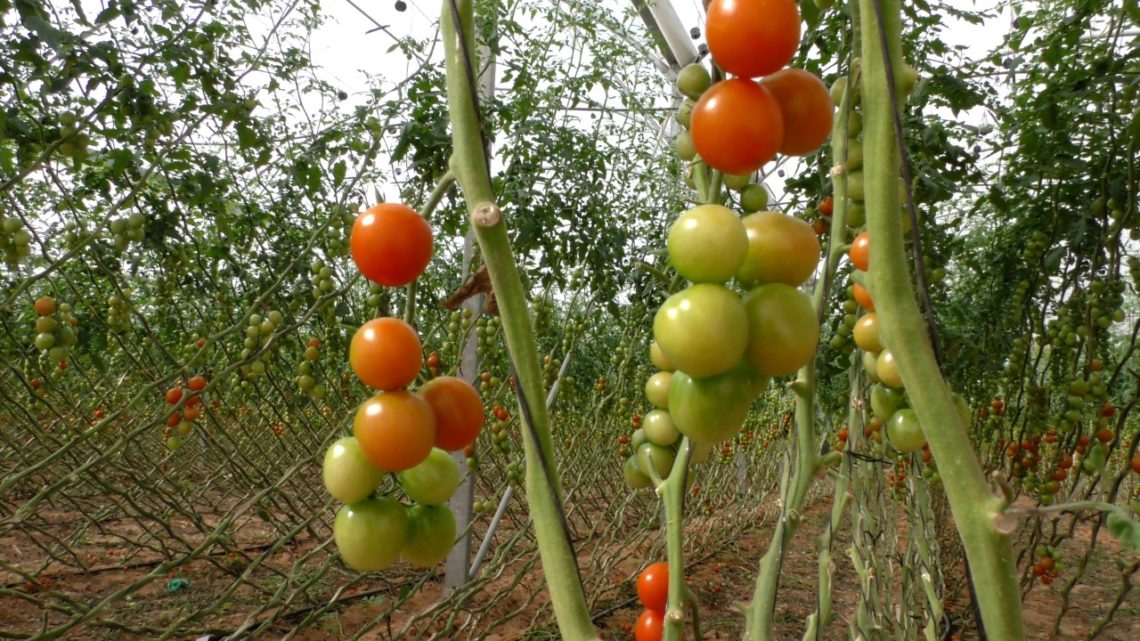Life
Save the Tomato: Israeli Scientists Fight Devastating Plant Disease
MAYA MARGIT / The Media Line
Researchers uncover new ways to counter virus sweeping crops around the world

Israeli researchers from leading agricultural institutes have found a new way to combat a viral disease that has devastated tomato crops around the globe.
First observed in southern Israel in 2014, tomato brown rugose fruit virus, also known as TBRFV or ToBRFV, has caused untold damage to tomato plants in recent years and has been detected in Europe, North America and throughout the Middle East.
While it does not affect human health, TBRFV causes plants to grow tall and spindly, and to produce yields of roughly 30% less than before contamination. The virus also has other symptoms, including yellowing leaves, yellow spots on infected fruit or brown wrinkled patches on fruit surfaces.
Similarly to HIV in humans, TBRFV weakens the immune system of tomato plants, making them particularly susceptible to various pathogens such as fusarium solani, a group of fungi that wreak havoc on crops.
In fact, in 2015 nearly 50% of tomato crops in southern Israel were wiped out as a result of the fungi attacking plants already weakened by TBRFV.
Dr. Yuval Kaye is director of vegetable research at the Ramat Negev Desert Agro-Research Center. Together with a team of scientists from other research centers around the country, he managed to find a rootstock – the base root portion of a grafted tomato plant – that can resist the fungi.

Fusarium solani fungi cause the roots of tomato plants to rot, thereby killing the plant. (Yuval Kaye)
“[Thanks to] the experiments that we did in the past two to three years, we found rootstocks that were more resistant or less affected by the fungi,” Kaye told The Media Line.
Tomato grafting is a horticulture technique in which a scion – the top portion of plant that produces fruit – is grafted onto a rootstock that has been selected for its ability to resist certain pathogens in the soil.

This photo shows where the scion of a tomato plant was grafted onto fungi-resistant rootstock. Photo taken November 2. (Raymond Crystal/The Media Line)
According to Kaye, while the research on fungi-resistant rootstocks has not yet been released to the general public, Israeli farmers have already been made aware of the scientific findings.
“We’re writing our reports and we’ve passed it to the farmers, [who are] already using this knowledge to grow their tomatoes in a better way,” he said.
Kaye spoke to The Media Line ahead of the world’s largest annual conference on desertification, led by the Jacob Blaustein Institutes for Desert Research (BIDR) at Ben-Gurion University of the Negev.
Titled “Feeding the Drylands: Challenges in a Changing Environment,” the virtual event will take place November 16-18 and include presentations from more than 100 researchers, government officials and activists.
Kaye and colleagues from other research centers around Israel hope to present their findings on TBRFV and fusarium solani in a scientific journal in the coming weeks. Nevertheless, he stresses that the fungi-resistant rootstocks are already available in most places around the world.
“I’m not doing this project alone,” he said. “It’s the whole [research and development] station here in Ramat Negev, researchers from the Arava, Volcani Center and many other people that are helping us. It’s a big initiative.”
This development is music to the ears of Eran Guy, an Israeli farmer from the Western Negev town of Kmehin who grows tomatoes and pumpkins, among other crops. His 2015 tomato crop was devastated by the combination of TBRFV and fusarium solani.
“In the beginning, the virus was a total shock. [Then] our yield dropped drastically year after year,” Guy told The Media Line.
“This virus causes the plants to become very weak, which leads to other issues,” he continued. “Our crops were attacked by blights we had no idea existed. There were periods where suddenly the entire crop would be destroyed and simply collapse.”

A close up of cherry tomatoes on Eran Guy’s farm. Photo taken November 2. (Raymond Crystal/The Media Line)
Once inside a greenhouse, TBRFV spreads like wildfire and can contaminate all nearby plants within weeks. According to scientists, it spreads mainly via bees that collect pollen from infected plants and transmit the virus when they visit the flowers of healthy plants. The disease is especially virulent in warmer climates.
For this reason, Kaye says that researchers are now focusing their efforts on finding new ways to treat the virus itself, rather than just the fungi, in order to restore tomatoes to their former delicious glory.
“When we find the solution to the virus, the yield will go up by at least 30%,” he stressed.
In the meantime, with the help of Kaye’s research, Israeli farmers have gone from losing half of their crops in 2015 to just 10% last year.
“We’ve reached a breakthrough and we now understand which rootstock to use and how to properly take care of the plants,” Guy explained. “This morning, I walked around and couldn’t find the fungus on any of my plants.”
“for more trusted Mideast news see www.themedialine.org”

Stories for you more +